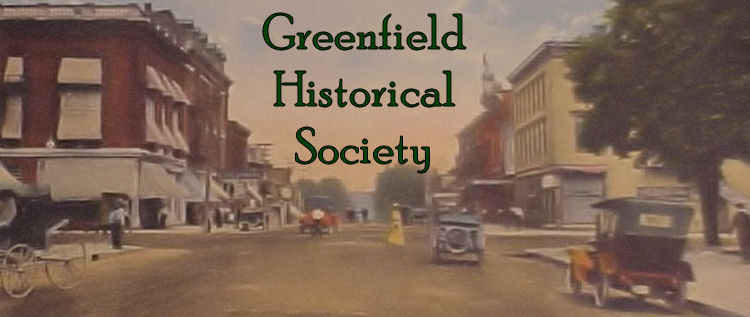
 |
|
|
||||||||||||||
Many Greenfield people "Made a Difference" . . .From Authors, to Inventors, to Manufacturers. . . OH MY!Also see our Photos-Special Collections page and our Biographies page for possible additional information. You may look for individuals on this page by a specific Last Name or by Category.
Early SettlersNoble CrawfordNoble Crawford was born in County Donegal, Ireland, in 1768 or 1769. His father wanted him to be a doctor so Noble was sent to a good school. Noble was 17 when his father died. His brother, being the oldest, inherited the estate and title giving Noble a small sum of money and passage to America. At Philadelphia he continued his studies briefly then secured a job in a cooper shop making flour barrels. After mastering the craft he took a teaching position. After the school term he returned to barrel making. He continued this pattern of teaching and making barrels during the off months, later moving farther west in Pennsylvania to Thompsontown. Here he taught several terms and married Mary Stuart in 1789. Son, William Stuart Crawford, was born in November 1790. The spring of 1791 found the Crawford family along with several other pioneer families floating down the Ohio River to Maysville, Kentucky. Here Noble settled his family and made peddling trips through Kentucky and Tennessee. On one of these trips, traveling with Samuel Crockett, Davey Crockett's brother, the peddlers lost horses and equipment to Indians. Through luck and bravery, all were gotten back and they returned safely to Maysville. Next Crawford and two brothers–in–law moved their families to Pike County, Ohio, along the Scioto River. They purchased land from a man they thought was a Revolutionary War veteran and owner of the land. After a year, the real owner came along and the settlers had to gather up their crops and move on. They bought 1400 acres in western Ross County along the Buckskin Creek, some 18 miles west of Chillicothe. Crawford built the first house in what was to become Buckskin Township. Here four more children were born to Noble and Mary. He also built a mill here but in 1806 he sold the mill and land, bought land farther down the creek and built another mill. In 1810 Crawford sold this land and bought land at the northeast corner of Main and Second Streets in Greenfield. In 1812 he built Travellers Rest, the first stone building in Greenfield, and began the operation of an inn. Many travelers passed through the town as it was located on the old Lebanon Road, a major east–west route through Ohio. Noble Crawford became the first postmaster of Greenfield and Travellers Rest became the post office in 1813. The mail rider would carry the mail from Chillicothe once a week. He would blow his horn as he came down the hill east of town and the townspeople would stop what they were doing and head to the inn for their mail. Each letter would cost the receiver thirty seven and one half cents. In 1820 Crawford's daughter married Dr. Garvin Johnson, the first doctor in the area. He set his office up in the inn. Later in 1829 Crawford sold the inn to Dr. Thomas McGarraugh who used the building as his home and office. After selling the inn, Crawford build a log house, another stone house and later a sawmill in town while continuing farming on thirty acres next to Greenfield. In 1838 he sold all town property and farm and moved to farm property a mile from Greenfield. In 1847 he moved back to Greenfield where his wife died the following winter. He then lived with his son-in-law near Austin in Ross County until his death in 1853. Business - IndustryThomas F. BrowderThomas F. Browder, a Civil War Soldier and business man, was born in Greene County, Ohio June 14, 1847. After attending school, he took one course at Forest Home College. In 1864 he enlisted in Company C, 60th Regiment Ohio volunteer infantry for three years. On May 9th at Spotsylvania, he was shot through the hip and lay in the field hospital for three days. Later, he was taken to Washington D.C., and finally furloughed home. He spent time in a Columbus hospital until he received his final discharge from the service. He returned home, went to college and taught school. In 1876 he came to Greenfield where in 1894 he opened the first steam laundry in Greenfield in the old German M.E. Church on Mirabeau Street. He later sold the laundry to Captain T. M. Elliot of the Elliot Hotel. He also worked on developing a lifesaving net and received his first patent in 1887. In 1900 he added two other patents for improvements and later procured protection for his invention abroad. Browder perfected his net and in 1900 he held a public demonstration on the Greenfield town square. Having advertised the event, the streets were filled with spectators. Otis Long volunteered to leap from the top of the three-story Smart building into the outstretched Browder net. He did it with no apparent shock. Browder advertised and sold his nets to many fire departments. On May 7, 1901, twenty people were rescued in New York City by the use of a Browder net. Many magazines carried articles about the advantages of the net. Orders for the net came in from as far away as Brisbane, Australia. The United State government even ordered nets for all fire departments in Washington D.C. In 1907 he sold his patents to the Corey-Patterson Company, where it became known as The Browder Life Saving Machine. The Greenfield Historical Society has an original Browder lifesaving net on display. To read more about this amazing device, see the
32-page booklet.
J.A. HarpsJames A. Harps was born in 1867 in the town of Snydersville, Monroe County, Pennsylvania. After growing up on the farm and attending the village school, Harps launched his business career by establishing a store of general merchandise. About this time Eugene L. and J. S. Arnott invented the Run Easy Kerosene and Kerosene and Gasoline can. When one of these cans made its way into the general store of James A. Harps of Ackermanville, Pennsylvania, Mr. Harps became quite interested in it. He saw a chance to develop a product that everyone would have a need for. Harps travelled to Greenfield to discuss his desire to become a salesman for the can with the patent holders only to find the rights were assigned to S. W. Price, who was manufacturing the can. After much discussion Mr. Harps returned to his eastern home with an option on the plant and returned in a few days to purchase the rights, title, and interest of the original patentees. He moved his family to Greenfield and built a home on West Jefferson Street and started the manufacturing of the Never Fail Gas Can - the name he gave to the product. In 1907 he built the factory on S. Fifth Street next to the B&O railroad. The can was advertised as durable, easy to operate, absolutely clean (“even a lady could use without soiling her gloves”). The best materials were used. Before leaving the factory, it was subject to a rigid test. A printed guarantee was placed on every can - giving the buyer the privilege of returning it, if not completely satisfied. The Never Fail Gas Can found a market from coast to coast and from the Gulf to the British possessions and with it went the name of Greenfield, Ohio. At one point the factory produced 1,000 oil cans per day. The company employed 40 workmen plus office and sales staffs. Mr. Harps was civically active, as he served on the Greenfield Board of Education and was president of the Peoples National Bank. 
E.L. McClainBiography of E.L. McClain appearing in the 1934 edition of the DragonWhen Edward Lee McClain was growing up in Greenfield he worked in his father's saddlery shop. Many times he watched customers putting old blanket or burlap pads on their horses to protect them from the rubbing of the leather harness collar. Young Edward decided that there should be a better pad that was low cost and easy to put in place. He designed a pad made of cloth and stuffed with cotton. It was open at the bottom so it would be easy to fasten on the neck of the horse. He also designed clips to hold it in place on the horse's collar and had a local blacksmith make some of them. He received a patent for the clips from the U. S. Patent Office. In 1881 he went into the business of manufacturing these new horse collar pads with two employees in a rented 10 by 12 foot room above a bank. By 1887 the E. L. McClain Manufacturing Company was putting out 300 dozen (3600) collar pads every day and 250 people were employed. McClain pads were sold all over the world.
See more information about E.L. McClain High School here. McClain's business grew and expanded with several factories across the country and even into Canada. He built the town of Atco, Georgia, with factories to supply the cotton he needed. In 1912 he announced the gift of a new high school for the town of Greenfield. Construction was begun in 1914 with the dedication in 1915. The first class to graduate from McClain High School was in 1916. E. L. McClain expanded his products into other areas. One item he received a patent on was this rat trap. As time went on, the automobile gradually replaced the horse as the means of transportation and trucks replaced horse and wagon as the means for hauling things. The need for horse collar pads gradually shrunk. The company had to find another product it could make to sell. During World War II the company manufactured thousands of sleeping bags and jungle hammocks. 2,827,000 life preservers were made for the armed forces. TAPATCO life preservers saved many lives of soldiers and sailors on torpedoed American ships. After World War II and the Korean War the main products of TAPATCO were sporting goods. The company made everything from life vests and boat seat cushion life preservers to hunting coats, sleeping bags and water skis. 

Interesting note about Mr. McClain and Mr. George Mr. George had received the news of the death of Mr. E.L. McClain in the morning mail. He sat in his office for a long time, holding the letter that announced the death of his friend, very quiet, tears in his eyes. He than went about his daily duties. In the evening, they found him in his studio, dead. He was attired in the artist's smock which he always wore when at work. Near by was the brush he had just been using; on the easel, an unfinished painting. He had died, as he would have desired it, doing the thing he loved best. His death occurred on 9 May 1934. Mr. McClain died 2 May 1934. C.R. PattersonBorn in Virginia, his family made it to Greenfield (circa 1842) and was living here according to the 1850 Census. For many years, the Patterson company produced numerous types of horse-drawn vehicles. In 1873 he went into partnership with a white man, J.P. Lowe. Patterson assumed sole ownership of the company when Lowe sold his share of the company to C.R. in 1893. The product line included buggies, backboards, phaetons, rockaways and surreys, the era's most popular wagons. His son Fred joined the firm and with Fred's direction the firm turned its attention to the automotive age that was taking over the carriage trade. It became the first African-American automobile manufacturer.
The Patterson-Greenfield automobile was introduced in the Greenfield Republican newspaper on September 23, 1915.
This new line of the business was dependent on having a lot of capital and that was not easy to acquire so the Patterson-Greenfield automobile never reached the mass-production level. Pattersons also turned their attention to the production of school buses which were in big demand by Ohio schools. Fred D. Patterson, graduated Class of 1888, Greenfield High School, and married Estella Postell. Here is a chart showing three generations of Pattersons involved in the manufacturing process. 
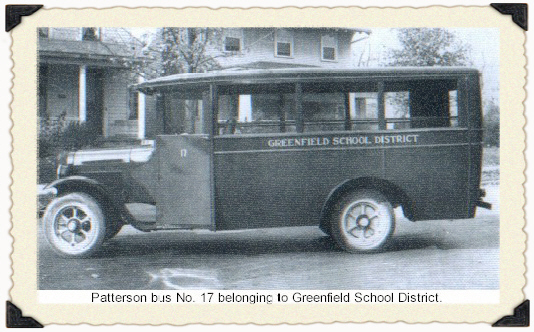
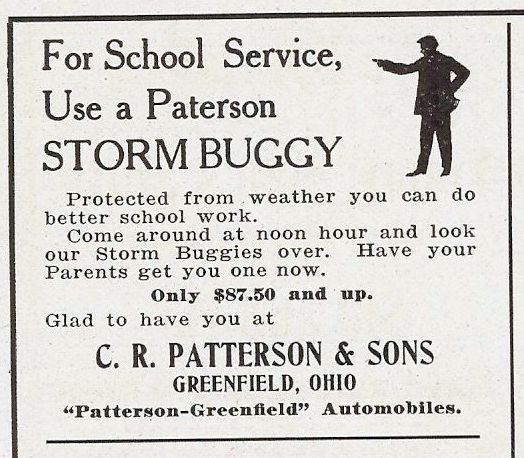
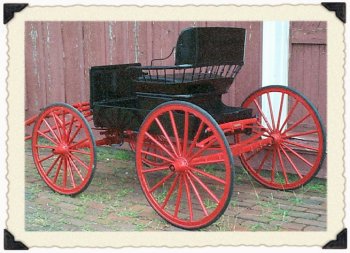

Frederick D. PattersonFrederick Douglas Patterson was born in Greenfield, the oldest son of C. R. and Josephine Patterson. After completing the eighth grade, Fred was refused admission to the all-white Greenfield high school. During the school year that C. R. sued the board to admit his son, young Fred and his brother Samuel were sent to live with relatives in Philadelphia and go to school. When the case was settled, Fred returned to Greenfield and was admitted to the high school. He graduated from Greenfield and entered The Ohio State University in September of 1889. While at Ohio State he was the first black varsity football player, playing on the 1891, 1892 & 1893 teams. He was a member of the Horton Literary Society, being Corresponding Secretary and vice president of that group. He served as Assistant Business Manager of The Lantern, the school's newspaper. He was Class President of the class of 1893. After his junior year he took a history teaching position at Louisville Central High School in Louisville, Kentucky and stayed there for five years. After the death of his brother, Samuel, Fred returned to Greenfield to help his father run C. R. Patterson & Sons. Fred Patterson was very active in the Greenfield community. Several instances in the 1902 issues of The Greenfield Republican list Fred as being a baseball umpire. He was a member of Cedar Gove Lodge 17, as his father was. He held the office of Worshipful Master and was also several times the Grand Orator. He is mentioned in Great Black Men of Masonry, 1723-1982, published in 1982 by Joseph Mason Andrew Cox. He was a member of the Greenfield Business League as well as the Greenfield Commercial Club. He was a member of a committee to organize a group of 50-60 "colored" men to help local and state officials in case of an emergency during World War I. Fred was active in local politics, being a member of the Republican Party he attended the 1902 convention of Ohio Republican clubs held in Springfield. That same year he spoke before the Greenfield Foraker Club. In March, 1902, he was nominated by the Greenfield Republicans as a candidate for City Council. Fred won the election and served on council for one year. He was appointed to standing committees including Finance, Street and Ordinance. He did not run for reelection in 1903. Fred was involved in the Negro Business League an organization started by Booker T. Washington. In 1905 Fred spoke at the sixth annual meeting. In that speech he stated that he believed that Negro businesses should advertise to get the business of the Negro population while continuing to appeal to the general population. During 1904 to 1907 he was one of the vice presidents of the organization. In 1908 to 1909 he was a member of the Executive Committee. From 1910 to 1919 he was president of the local chapter. He was chosen as "one of the leading men of this country" to be on the national committee organizing the celebration of the fiftieth anniversary of the Emancipation Proclamation. In 1924 Fred was an alternate to the National Republican Convention. Also see The Negro Solder, His Part in the World War by Fred D. Patterson. 
John M. WaddellJohn M. Waddell had a remarkable industrial career. In 1888 he founded the John M. Waddell Manufacturing Co. It is said the company was the outgrowth of a domestic incident one morning, in the absence of the cook, Mr. Waddell found himself in need of ground coffee and began to use the old box coffee mill. This contraption had to be held between your knees and was a struggle to use. This gave him the idea to produce a new and improved coffee grinder which he began producing in 1889.

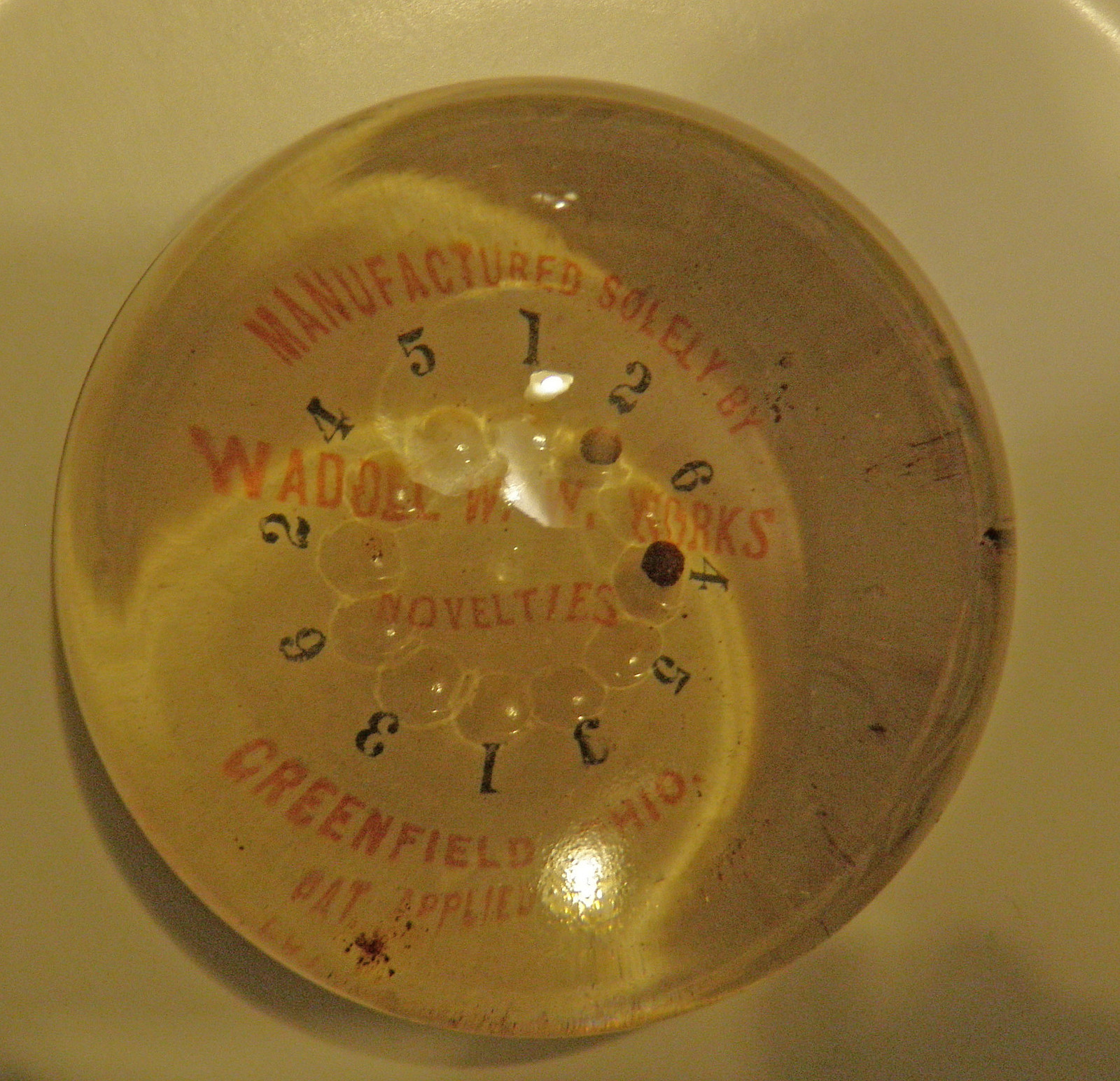
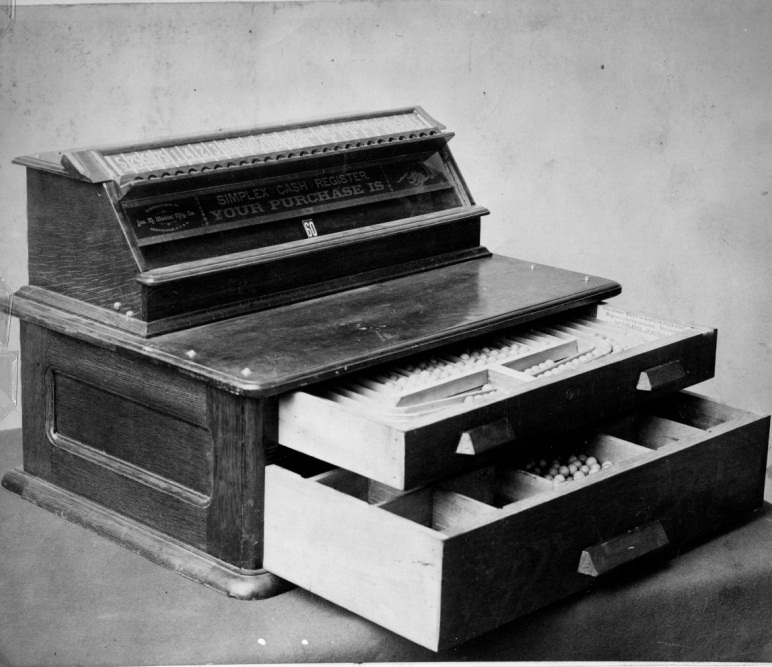


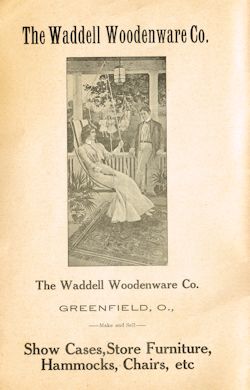
Dr. Leslie E. WilkinDr. Leslie E. Wilkin was an optometrist in Greenfield who began selling glasses by mail order. He changed his product to hosiery, a product much easier to ship. The Wilknit Company was started in the 1920s. Dr. Wilkin sold sales kits to salesmen who ordered the product through him. The company grew through the 1930s. Materials were difficult to come by during the war years, but the company survived to continue to grow after the war. By the 1950s the company employed over 200 with 7,000 sales agents and did over one million dollars in business. It had its own dying factory in Greenfield with its shipping facilities in the nearby town of Leesburg. The company sold a full line of men's women's and children's hosiery, buying the product, dying it in the company factory and shipping all over the country. The Wilknit Company is credited with both Greenfield and Leesburg post offices becoming first class category post offices. The postage bill in 1939 was $162,000. 22 million letters were handled in 1958. Included in the company's customers were many Hollywood stars. Eleanor Roosevelt was a reported customer. After the war the company held an annual trip to Coney Island, an amusement park near Cincinnati. The company chartered busses to drive the employees. A trip for disadvantaged youth was also held. The company closed its doors in 1963. 

EducationGrace BlakeGrace Blake was a long time teacher (37 years) at McClain High School from 1924-1961 and was head of the English Department. She revised the 1932 McClain High School art catalog, originally published in 1918, and played a key role in revising the art catalog published again in 1980. 

Benton Raymond DuckworthBenton Raymond "BR" Duckworth 1890 – 1996 Benton Duckworth was a longtime educator at the Greenfield Exempted Village School District. He was born near Cutler, Washington County, Ohio, one of twelve children born to Moses Timothy Duckworth and Anna "Annie" Poling Haddix Duckworth. In 1907 BR accepted an offer to teach in a one–room school in Qualey, Ohio (also Washington County) despite having attended only two years of high school. After a few years of teaching at Qualey, he wanted to further his education. In 1912 he enrolled at Ohio Northern University. While there he also completed his high school requirements while working toward his Bachelor of Science degree in education. In three years, he completed his high school education as well as earning his undergraduate degree. From 1915–16 he was principal of rural Grand Rapids High School in Wood County. He had met a Greenfield co–ed while at Ohio Northern, Carrie Lois Shrock. His courtship meant many trips to Greenfield, staying at the Shrock family farm. In March of 1916 they were married. BR accepted an appointment as science teacher in the then new Edward Lee McClain High School, thus beginning a career at McClain lasting 40 years! After a short military career in WWI, he was honorably discharged due to an illness (possibly a victim of the 1918 Influenza Pandemic). He then returned to Greenfield where he taught science. He was also a vocal advocate of vocational and agricultural education. In 1923, principal F.R. Harris advanced to superintendent and BR moved from the classroom to the principal's office. He also earned his master's degree in education from OSU. BR encouraged continuing education for the teachers and membership in the NEA, the Ohio Education Association, and the PTA. He introduced Spanish and French, metal shop courses and general math. He expanded the cafeteria, introduced driver's training, established a special class for students with learning difficulties and organized a student council. In 1939 F.R. Harris retired and BR became the superintendent. In 1956, after 44 years in education – 40 of them in Greenfield – he decided to retire. But only to embark on his next career – practitioner of modern, scientific farming and woodlands management. He planted trees, he built ponds, he worked to control erosion. Being fond of fruit trees and their propagation, he combined the educator with the forester by budding and grafting a myriad of trees. He wrote a number of articles for numerous outlets. In 1984 BR said: "If my gradually diminishing energy proves to be sufficient…and when I finally abandon my shovel, planter bar and grub hoe, I will have the satisfaction of knowing my projects will be in good hands." The above article was extracted from information used in inducting BR Duckworth into the 2020 Highland County Historical Society Hall of Fame. Constance "Connie" FordConstance Connie Ford was born in Greenfield but worked much of her life in the Columbus area. She was a graduate of Central High School in Columbus. She retired as an EEG Specialist at the OSU Hospital and also at the Neurological Associates. She later retired as an Endtech Hospital Billing Specialist at Neurological Specialist. She was a former member of the Bibleway Church of God. Connie was also a lifetime member of the Greenfield Historical Society, Bainbridge Senior Citizens, the African American Awareness Research Council (AAARC) of Hillsboro, Bayless/Lowe Family Reunion. She was also devoted to Greenfield, Hillsboro and Bainbridge. Connie was known as being a Keeper of Stories not only of her family, but also the Highland County and Greenfield area. She had a wealth of knowledge about the area and shared it with others. She even portrayed Lucretia Baird (her relative) at a Ghost Walk sponsored by the historical society. Read this news article to learn more about her rich history and her family. 
George Edward HullGeorge was born in Greenfield, Ohio. As a young boy he could often be found working alongside his grandmother on his family's farm, igniting a love for plants early on. He attended McClain High School and later The Ohio State University where he earned both a bachelors and masters degree in the field of horticulture. George was a lifelong strong Buckeye, scarlet and grey through and through! After graduating, George moved to Arizona and began working at Harper's Nursery. His passion for plants soon took him far and wide and he traveled extensively for conferences and research. He collaborated with several nurseries across the southwest as well as the renowned Phoenix Desert Botanical Garden. Later in life George discovered a love of teaching. He taught memorable courses at Glendale Community College, Mesa Community College and Arizona State University (ASU). He was a well-loved teacher and mentor. Students will remember the long hours dedicated to designing and transporting entries to the annual San Francisco Flower and Garden Show. Their entries were always popular and received recognition several years in a row. George developed and patented over 25 new strains of plants, most notably 'Sparky,' an ASU colored Tecoma blossom. A portion of the proceeds through the sale of 'Sparky' funded a horticulture scholarship for ASU students. 
Florence Kelso1875 - April 4, 1945 Education Service to Greenfield Schools - Greenfield Cemetery 

Government - LawAlbert Jeremiah BeveridgeAlbert J. Beveridge was born October 6, 1862 in Highland County, Ohio and his parents moved to Indiana soon after his birth. He was the cousin of E. L. McClain. Beveridge was admitted to the Indiana bar in 1887 and began the practice of law in Indianapolis. He first attracted national attention by his eloquent speeches defending the increasing power of the federal government and advocating U.S. territorial expansion overseas. In 1899 he was elected as a Republican to the U.S. Senate (1899–1911), where he supported the progressive legislation sponsored by President Theodore Roosevelt. Breaking with the conservative wing of his party, he served as chairman and keynote speaker of the emotion-packed convention that organized the Progressive Party and nominated Roosevelt for president in 1912. Beveridge never again held public office, devoting much time after 1912 to the writing of history. His The Life of John Marshall, 4 vol. (1916–19), was widely acclaimed and won a Pulitzer Prize. At the time of his death (Indianapolis, Indiana, aged 64) he had completed two volumes of a biography of Abraham Lincoln, published in 1928. In the twilight of his life, he came to repudiate some of the earlier expansion of governmental power that he had championed in his earlier career. In one notable address, delivered before the Sons of the Revolution's annual dinner in June 1923, Beveridge decried the growth of the regulatory state and the proliferation of regulatory bodies, bureaus and commissions. "America would be better off as a country and Americans happier and more prosperous as a people if half of our Government boards, bureaus and commissions were abolished, hundreds of thousands of our Government officials, agents and employees were discharged and two-thirds of our Government regulations, restrictions and inhibitions were removed." 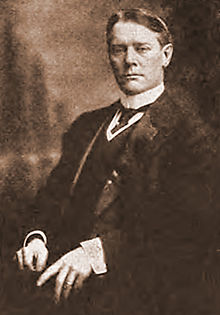
Henry L. DickeyHenry L. Dickey was born in South Salem on October 29, 1832, and moved with his family to Washington Court House in 1836. They later moved to Greenfield in 1847 where young Henry attended the Greenfield Seminary. He became a civil engineer and was in charge in the construction of the Vinton County section of the Cincinnati & Belpre Railroad. He resigned that position to study law and was admitted to the bar at Chillicothe in 1857. He graduated from the Cincinnati Law School in 1859 and began his practice in Greenfield. In 1855 a group of young men, including Dickey, was upset with the condition of the village, ruts in the streets, roaming animals, trash piles. They formed the Shanghai council and were elected to office, getting to work on the town's problems. To raise funds for the Civil War effort, Dickey wrote the play "In Shiloh Field". The play was performed by local actors and was a success. During the 1860s Henry served as mayor and was on town council. He was also a member of the Ohio State House of Representatives in 1861. He served in the Ohio State Senate in 1868 and 1869. In 1865, a group of Greenfield women were upset with the number of liquor establishments in town and marched up Main Street entering stores and spilling liquor everywhere. They were charged by the owners. Dickey was one of the lawyers who defended the women in the county court. Henry L. Dickey was twice elected to the U. S. House of Representatives representing the Greenfield area from 1877 to 1881. He was admitted to practice before the U. S. Supreme Court in 1877. He died on May 23, 1910 and was buried in the Greenfield Cemetery. 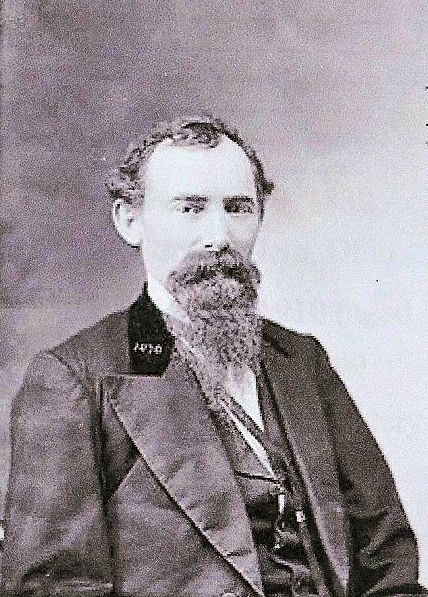
Inventors and Patent HoldersIn addition to patents awarded to more recognizable Greenfielders such as Waddell, Harps, and McClain, numerous patents were also awarded to Greenfield inventors as shown in the list below.
LiteraryOtway CurryBorn in Greenfield, March 26, 1804, on what was the corner of First and South Streets in a one-room cabin; died in Marysville on February 17, 1855. He moved with his father (Colonel James Curry) to Marysville, Union County, Ohio, in 1811, and his early education was interrupted by the War of 1812. He went to Lebanon in 1823, learned the carpenter's trade, and worked at it in various towns until 1829. During this time he began writing verses anonymously for the newspapers, as "My Mother" and "Kingdom Come"; these gained popular favor. One of his poems, "The Lost Pleiad" appeared in McGuffey's Sixth Reader. He was then a farmer in Union County until 1839. Curry served in the state legislature in 1836-1837 and again in 1842. In 1850 he was elected a member of the second Ohio Constitutional Convention. He was one of the signers of Ohio's state constitution in 1841. During the campaign of 1840, Curry wrote "Log-Cabin Song" which was sung by the supporters of William Henry Harrison. He became one of the editors of the "Hesperian" at Columbus, Ohio, in 1838, and in 1839 began to study law at Marysville. He was again in the legislature in 1842, and in that year bought the "Greene County Torchlight", published in Xenia, Ohio. He returned to Marysville in 1845, and practiced his profession until his death, except in 1853-4, when he edited the "Scioto Gazette" in Chillicothe. He wrote and published poetry all through his life. 
The Great Hereafter' Tis sweet to think when strugglingThe goal of life to win, That just beyond the shore of time The better days begin. When through the nameless ages I cast my longing eyes Before me, like a boundless sea, The Great Hereafter lies. Along its brimming bosom Perpetual summer smiles, And gathers like a golden robe, Around the emerald isles. There in the blue long distance, By lulling breezes fanned, I seem to see the flowering groves Of Old Beulah’s land. And far beyond the islands That gem the wave serene, The image of the cloudless shore Of holy heaven is seen. Into the Great Hereafter - Aforetime dim and dark - I freely now and gladly give Of life the wandering bark. And in the far-off heaven When shadowy seas are passed, By angel hands its quivering sails Shall all be furled at last. Frank Raymond HarrisFrank Raymond Harris, or F. R. as he was known, was born April 19, 1880, in Greenfield to David and Sarah Shrock Harris. His father fought in the Civil war, was town marshal and later a cobbler. F. R. graduated from Greenfield Central High in 1897, from Ohio Wesleyan in 1902 with a B. A. and from Harvard in 1910 with a M. A. He was an educator in the Greenfield school system for 36 years, from 1903 to 1939. He was high school principal from 1903 to 1921, being the first principal of McClain High School in 1915. He was superintendent from 1921 to 1939 when he retired. When Edward L. McClain was interested in donating a modern, up-to-date high school building, he sought out Harris to lead the planning. Harris was the author of four books:
During the summers and after he retired, Harris travelled extensively. He visited 128 countries and islands, flew on the Hindenburg before that airship's tragic accident and flew over the North Pole in 1958. In all, he logged over 100,000 miles. He was involved in the organization and founding of the Greenfield Historical Society. He was a Blue Lodge Mason, a member of Elks, Eagles and Rotary. He headed campaigns for War Bonds and Liberty Bonds. He funded the moving of Travellers Rest when a gas station was scheduled to be built in its place. As a young student he was hired by the school custodian for 25 cents a week to ring the school bell. This prompted Harris in later years to donate to the building of a bell tower in his name to house the old school bell. F. R. Harris died on April 1, 1965. He travelled the world over and never owned an automobile. 
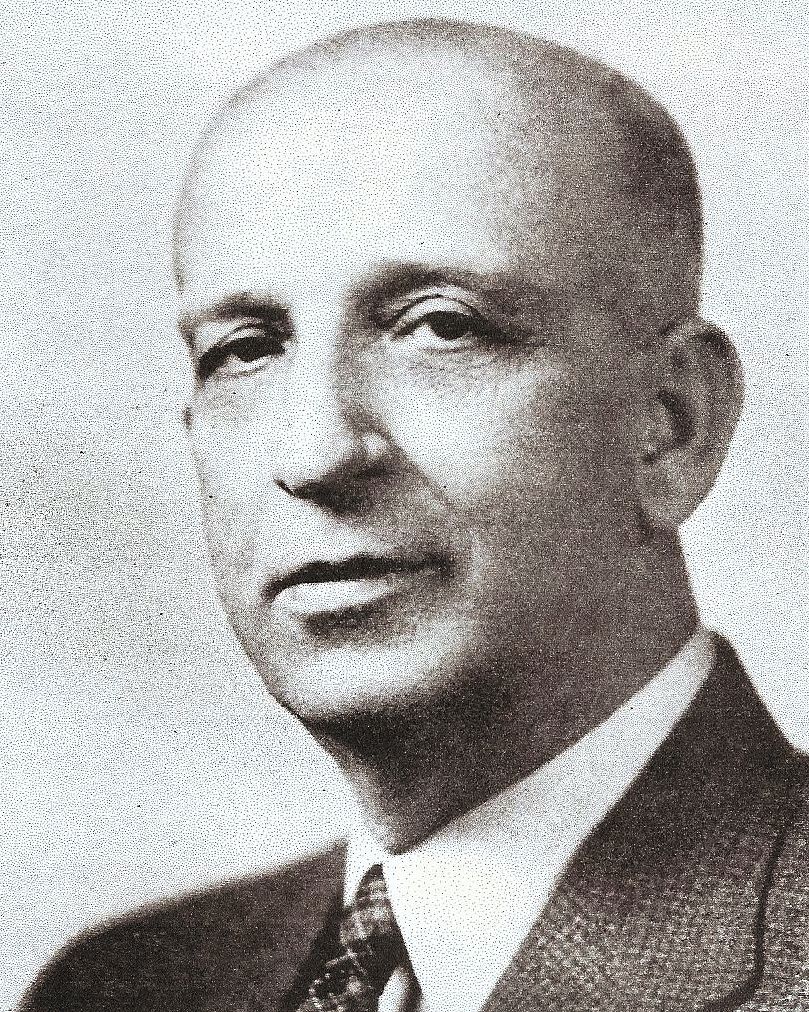

Helen HooverHelen Drusilla Blackburn was born in Greenfield on January 20, 1910. She attended Greenfield schools and graduated from McClain High School. She went on to Ohio University where she earned a degree in chemistry. She married Adrian Hoover in 1936. While Adrian was in the military during World War II, Helen studied at the University of Chicago and earned a degree in metallurgy. They continued living in Chicago after he returned from the war. She worked in metals research and he was a graphic designer.In 1954, after a vacation to the north woods of Minnesota, the couple decided to rent a cabin and spend a year in the wilderness. Surviving proved a challenge but, after a year, there they made the decision to make it their permanent home. She wrote articles for scientific journals and such magazines as Audubon and Gourmet. Her books about their life in the wilderness and nature books were a means to make enough money for their needed supplies. Adrian printed stationery and made wood carvings. Helen wrote seven books including three children's books. Adrian made pen and ink drawings to illustrate them. Four of her books, "The Gift of the Deer", "The Long-Shadowed Forest", "A Place in the Woods", and "The Years of the Forest", were based on their life of coping with the difficulties of living in the wilderness. After sixteen years they decided to retire in 1970 to Laramie, Wyoming, where they lived until her death on June 30, 1984. The Gift of the Deer - The classic story of a family of deer and the humans who loved them. Illustrated by Adrian Hoover.
A Place in the Woods - The beloved Minnesota author tells her tale of everyday life in the woods. Illustrated by Adrian Hoover.
Great Wolf and the Good Woodsman- A classic story with a message of peace, tolerance, and kindness–illustrated by Betsy Bowen.
Her obituary published July 7, 1984 read: 







Violet MorganViolet Morgan was born in Highland County, Ohio October 15, 1895, to V.E. and Lilla (Copes) Morgan. Her grandfather was a Virginia Civil War veteran. She graduated from Hillsboro High School in 1914, and attended Miami (Ohio) University and Wilmington College. She began her teaching career in Carmel (Highland County). Her book, "Squaw Winter" is a novel, based on the Indian comunity near Carmel. She taught in several Highland County schools, including Penn Township and Mowrystown (possibly others). Her book, "Folklore of Highland County" is a collection of historical stories of the area. Her books captured the interest of author Jesse Stuart, of Kentucky. Partly through his influence, she received a nomination for a Guggenheim Award. She died, in Hillsboro, after a lengthy illness, March 16, 1983. 

Margaret Plyley MurrayAs a country correspondent for the Chillicothe Gazette, Mrs. Murray reported the happenings of the little community of Fruitdale, near her stately old home of "Forestwild Farm" on Route 41. Her service covered a period of 50 years, and at the time of her retirement in 1959, she wrote to the Editor Howard C. Oyer: "I enjoyed every minute of it." Margaret was born to Francis Plyley and Eliza Ann Collier in 1873 and she married Mitchell James Murray. She died June 12, 1960. "Echoes of Forestwild", one of her noted works, represented the impressions of the 86 years that she lived on the Paint Township Farm in Ross County. 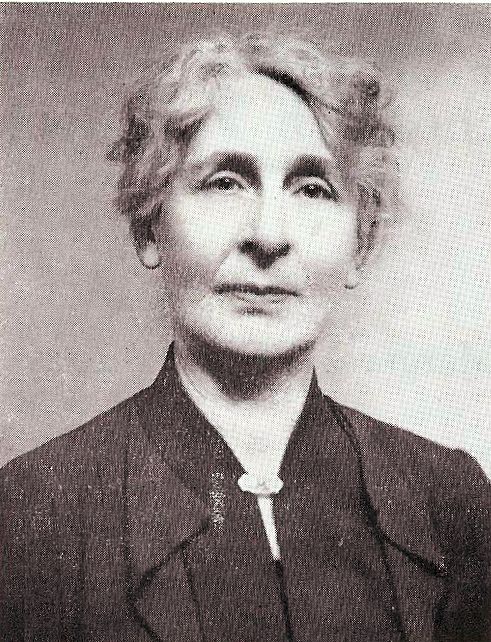


Elizabeth Hyer NeffAuthor and lecturer; Class of 1873, Greenfield High School.


W. H. Irwin, Esq. and Rev. S.D. CrothersCentennial Historical Sketches of Greenfield and Vicinity, July 4th, 1876Greene B. BusterBrighter Sun, 1954Married M. Kathleen Patterson (daughter of Mr. and Mrs. C. R. Patterson) in 1934. 
Dr. Samuel McCord CrothersThe Gentle Reader, The Pardoner's Wallet

Karthleen PattersonIt's Been a Wonderful Life One Day at a Time
Charles K. PulseJohn Bonwell
Maude S. ReaAlong the Way, 1952
Rev. Andrew Ritchie1782-1862Life and Writings of Samuel Crothers, Cincinnati, 1857 Mack SauerThe Editor Squeaks, Ramblins and RumblingsMack Sauer, Jr., 81, left this earth July 11, 2016. Born in Greenfield, OH, he graduated from Fairfield High School in Leesburg, OH, and received his bachelor's degree in Journalism from Ohio University. He was a member of Phi Kappa Tau. 

Brand WhitlockThe Preachers Son, The Harpers Monthly, Nov. 1903Wenona MarlinWill o' the Wisp, New York and Paris SketchesClass of 1888, Greenfield High School. Journalist, lecturer and author. One of the leaders of the equal suffrage movement in New York. Born in Greenfield, Ohio, November 15, 1871, a graduate of Greenfield High School 1888, was first a stenographer for Procter and Gamble in Cincinnati. By 1905 she was in New York City taking a lead in the Women's Suffrage Movement. "The fact that many men today regard the vote with such little respect is partly due to the fact they never did anything to earn it." In 1917 she picketed the White House as a Silent Sentinel protesting President Wilson's lack of support for women's suffrage. Journalist, lecturer, an employee of Harper Brothers Publishing Company, and traveled extensively throughout Europe and South America as a journalist. She traveled to the Panama Canal to report on its construction in 1913 then told the story of her efforts to prove her American citizenship as a single woman upon returning to the United States. Author of "New York and Paris Sketches," "Will o' the Wisp". She continued active in the National Women's Party. She died September 8, 1945, in New York City and is buried in Greenfield Cemetery. She demonstrated her interest in Greenfield by leaving several thousand dollars to Greenfield Municipal Hospital and the First Baptist Church. 

Karthleen PattersonIt's Been a Wonderful Life One Day at a Time
Charles K. PulseJohn Bonwell
Maude S. ReaAlong the Way, 1952
Rev. Andrew Ritchie1782-1862Life and Writings of Samuel Crothers, Cincinnati, 1857 Mack SauerThe Editor Squeaks, Ramblins and RumblingsMack Sauer, Jr., 81, left this earth July 11, 2016. Born in Greenfield, OH, he graduated from Fairfield High School in Leesburg, OH, and received his bachelor's degree in Journalism from Ohio University. He was a member of Phi Kappa Tau. 

Brand WhitlockThe Preacher's Son, The Harpers Monthly, Nov. 1903Harry GadburyGraphic ArtsClass of 1910, Greenfield High School. Attended Cincinnati Art School. MedicineMeyer HeidingsfeldDr. Myer L. Heidingsfeld, 1871–1918 Dr. Heidingsfeld was a physician, 19 W 7th Street Cincinnati. Noted skin specialist. University of Michigan, A. B. Ohio Medical University, M. D., P. G. work Berlin and Vienna. University of Cincinnati, 1909–1918 Chair Department of Dermatology. UC Department of Dermatology history 2020: Dr. Heidingsfeld was a hard-driving individual who took great pains to be punctual and regular in attendance and had no hesitancy in letting others know that he expected the same in return. With his exceptional energies, Dr. Heidingsfeld created large and interesting clinics. His Saturday morning lecture in the amphitheater was always popular and instructive. Patients were requested to walk up old wooden steps to the amphitheater stage to be observed and were used to demonstrate the clinical phases of his lectures. Despite a busy private practice, Dr. Heidingsfeld found time to attend the outpatient dispensary late in the afternoon. The medical residents would hold the interesting cases and it was not unusual for him to upset many a well–conceived diagnosis by means of his keen insight and great knowledge. These short sessions were very instructive and became noteworthy because of the fine points he demonstrated. Dr. Heidingsfeld gave the first injection of Salvarsan, called "Praeparat 606," in Cincinnati for the treatment of syphilis in 1910, soon after Ehrlich's presentation at Wiesbaden, Germany. He also pioneered X–ray therapy for dermatological disorders. He was born on September 6, 1871, in Greenfield and he died September 3, 1918, and is buried in Walnut Hills Cemetery Evanston, Hamilton County, Ohio, USA Section 4 lot 77 Grave 1 Siblings The Village of Greenfield Wilfred KonnekerWhen Wilfred Konneker's mother died of tuberculosis in 1926, he was only four years old and his sister Winona was seven. The children were sent to a sanitarium for a year to prevent them from coming down with the same disease. When they were released, their father, Roy Konneker, being a single father, sent them off to Greenfield to live with his sister and mother. Roy did not abandon them, visiting them regularly and even taking them to the 1933 Chicago World's Fair. Young Wilfred entered first grade when he moved to Greenfield and because of his late start, his teacher wanted to hold him back but, through his father's intervention, Wilfred read books over the summer and was promoted. Living in Greenfield was an adventure for Young Wilfred. He and a friend won a pony in a grocery store contest by enlisting all their friends and neighbors to give them credit for their purchases. He took on morning and afternoon paper routes when his grandfather gave him a bicycle. He studied the Boy Scout handbook before so that when he came of age he could pass the Tenderfoot requirements quickly. He went on to become an Eagle Scout and earned the Bronze Palm for earning extra merit badges. Upon graduation from McClain High School, he and a friend hitchhiked to San Francisco and back so they could attend the World's Fair being held there. This drive and determination continued on into college and adulthood. He attended Ohio University and received his B.S. in chemistry and math in 1943. During World War II he worked on the Manhattan Project (atomic bomb). In 1947 he received his M.S. from Ohio University in physics and later his Doctorate in physics from Washington University in Saint Louis. He was a pioneer in the nuclear medicine field, using radioisotopes for diagnosis and therapy. He founded and co-founded many companies. He and his wife, Ann Lee, are major philanthropists, endowing the Konneker scholarship each year to a McClain High School grad, many programs at OU, St. Louis, and even the historical society's Stone Schoolhouse (Konneker Education Museum). 
MilitaryWilliam BoydRevolutionary War, War of 1812 James CollierIn 1814, Captain James Collier moved on the farm just east of town. Capt. Collier was a Revolutionary soldier and during most of the time he was in the service he belonged to the "Flying Camp" (a body of men used to make rapid movements on the enemy). Much of the time he was in the service he was with General Washington; was with him in the retreat throuogh New Jersey, and the suffering of Valley Forge. He took an active part in the battle of Long Island, helped to fight the battle of White Plains, assisted in the capture of the Hessians at Trenton and was in the battle of Brandywine. For his gallant services he was presented by Gen. Lafayette with a fine sword. In 1832 the government granted him a pension of forty dollars a month. He died January 30, 1844; buried in Section 1/lot 99 of the Greenfield Cemetery. James CurryThe following summary was taken from an article written by Dorothy Countryman for a newspaper column (Frontier Figures), date unknown.When James Curry came to Greenfield he had been a soldier and an army surgeon. No means of sharing news existed in the village and the only collections of books belonged to local clergy. To Curry, that was not much of a choice. He was born in Ireland Jan. 1, 1752. Once arrived in America he took up residence in Staunton, VA and married a cousin of Scottish poet Robert Burns. Between them they began to develop a collection of books, works by Milton and Plato's Republic graced their bookshelves. Curry enlisted in the Continental Army and served under fire at Brandywine, Valley Forge and Germantown. He apparently had at least a speaking acquaintance with his commander Gen. George Washington. Although his medical training was based solely on what he read, Curry developed a knack for setting broken bones. He treated not only his fellow soldiers, but also their horses and mules as well, and was assigned as assistant to a regular surgeon. In this capacity he learned much practical medicine that would later stand him in good stead on the western frontier. Curry was taken prisioner by the British at the battle of Charleston (now WV) and remained some time with them. He served a total of six years, six months in the Continental Army before coming to Ohio to collect on his Revolutionary land grant. In 1806, Curry was elected to post of brigade inspector for the newly formed Ohio Militia. He settled his cultured wife in a new cabin on the edge of a Highland County meadow and became a colorful figure in the early population of Greenfield. With them the Currys brought their books, a collection of leather-bound newspapers that the colonel sewed together himself, and a belief that reading should be for everyone. It was this belief that led the Currys to invite their neighbors to use the books and papers and as funds allowed they had new volumes shipped from the East to enlarge the collection. It was Greenfield's first library. It is no wonder with this literary background that Curry's son, Otway became a talented poet. When his father insisted he study law, the young man ran away from home and pursued his writing career under the pen-name "Abdalla". Although he eventually became a lawyer and served several terms in the Ohio legislature, it is for the verses which appeared in newspapers, anthologies, school readers and later on pbulic buildings and monuments that Otway is remembered. Elizabeth GunnA "Marinette" during WWIOn August 12, 1918, the Marines announced the creation of the Marine Corps Women's Reserve and that they were looking for physically and mentally strong women with a background in stenography. The following day, thousands of women lined up in an attempt to join the elite Corps. The first woman to enlist was Opha Johnson, age 40. Johnson was already working at Headquarters Marine Corps as a civilian so the transition to military personnel was simple. By the end the war, Johnson was the most senior enlisted woman in the Marines with a rank of sergeant. Following the armistice on November 11, 1918, an order was put out to immediately begin discharging the female Marines from active duty service. Some stayed on as reservists to finish out the four years they initially signed up for. Others received their honorable discharge and returned to their pre-war lives. The Marines no longer actively recruited women after the end of World War I. Gunn is listed in a booklet "WOMEN MARINES IN WORLD WAR I" as QUARTERMASTER'S DEPARTMENT, Privates. This is an interesting document, especially for those who like military history and women in the military. Elizabeth's name appears twice in this 82–page document (page 62 and 77). Although no picture of her is there, it is possible she may be in one of the group pictures of unidentified women Marines. So although Gunn was not the first female Marine, at least she may be the first female Marine from Greenfield.
Born in Greenfield, 12/7/1879 General John Edwin HullJohn Edwin Hull was born two miles west of Greenfield on May 25, 1895. He attended Greenfield schools and was on the 1911 and 1912 football teams, captaining the 1912 team. During that year the team outscored its opponents 237 points to 8. Hull went on to Miami University in Oxford, Ohio as a pre-Med student. On the football team there he played every minute of every game for three years. He graduated in 1917 and went on to officer training school and was commissioned as a lieutenant in the Army. During World War I he saw action in the Marne offensive, along the Vesle River, the Meuse-Argonne offensive and was a member of the army that occupied Germany. After the war he remained in the Army and was graduated from the Army War College in 1938. During World War II he was a member of General Eisenhower's staff holding the position of Chief of Operations and later the position of commander of the Pacific Area. He also held the positions of Director of the Weapons Evaluation Group and Deputy Chief of Staff for Operations and Administration for the Office of the Secretary of Defense. Later, under then President Eisenhower, he was the Commander in Chief of the Far East Command at the conclusion of the Korean War. He is Highland County's highest ranking officer in the Army. General Hull retired on April 30, 1955. He died on June 10, 1975 and was buried beside his wife in Arlington National Cemetery. Among his awards and decorations are the Army Distinguished Service Medal, the Silver Star, the Legion of Merit, the World War I Victory Medal, World War II Victory Medal, Korean Service Medal and the United Nations Service Medal for Korea. 
Noble Edward IrwinNoble Edward Irwin was born to Lavinia A. Rogers and Henry Irwin on September 29, 1869, just east of Greenfield. He did not finish high school but his determination helped him pass the entrance exam when he was appointed to the United States Naval Academy in 1887. There he played on the Navy football team in the first Army-Navy game and graduated in 1891. He returned as Athletic Director for the Academy during 1907–1909. He was commissioned as Ensign in 1893 and the same year served on the USS Newark during the Brazilian Revolution. In 1898 he served on the USS Baltimore in the Battle of Manila Bay during the Spanish American War. In this battle he was wounded. Later he served in the Philippine campaign and was part of the Relief Expedition during the Chinese Boxer Rebellion. During World War I Noble Irwin commanded USS New Orleans in 1914 during the Fourth Battle of Topolobampo, a naval battle between Mexican forces during the Mexican Revolution. He was awarded the Navy Cross for meritorious service as Director of Naval Aviation. After the war he was in command of the battleship USS Oklahoma and Destroyer Squadrons of the Scouting Fleet. He became a Rear Admiral in 1924 and was Chief of the Naval Mission to Brazil from 1927 to 1931. In 1931 he became Commandant of the 15th Naval District and was transferred to the Retired List in October 1, 1933. He died August 10, 1937 at Warner Springs, California. His ashes were buried in a cemetery at Annapolis, Maryland next to his wife and her parents. The USS Irwin, a Fletcher class battleship named after Noble Irwin, was launched in 1943 and commissioned in 1944. It saw action in the Pacific during World War II and also during the Korean Conflict.  
General Duncan McArthur – June 14, 1772-April 29, 1839General Duncan McArthur obtained a position with Nathaniel Massie in 1793, and worked with Massie on a surveying expedition in the Northwest Territory. In 1796, he worked with Massie to lay out the new town of Chillicothe, Ohio, which was to become the state capital in 1803. His first recorded visit to Greenfield was 1796, leading a group of surveyors. In the fall of 1799 he began layout out the town (190 lots). First settlers began arriving spring of 1800. It was his desire that Greenfield would become the county seat when new counties were being formed. He even donated a square for a court house and jail and a plot for a cemetery. However, that would not be the case because Greenfield was not near the center of Highland County when it was carved out, and a county seat must always be centrally located. In 1805 he was elected to the State Legislature. In 1808 he was elected major general of the State militia. After the outbreak of the War of 1812 he was given the commission of colonel of Ohio volunteers. In the fall of 1812 he was elected to Congress and the following March he was commissioned brigadier general of the army. As General, he was 2nd in command to General William Henry Harrison. When Harrison resigned in 1814, he succeeded to his command of all the armies of the Northwest Territory. He also served as the 11th Governor of Ohio (December 18, 1830 – December 7, 1832). He died at his estate, Fruit Hill, near Chillicothe, April 29, 1839. He is buried in Grandview Cemetery, Chillicothe, Ohio. 
John A. Smith May 9, 1922-December 7, 1941John A. Smith was born on 9 May 1922, in Rainsboro, Highland, Ohio, United States, his father, Clarence Eugene Smith, was 38 and his mother, Elma Ladd, was 37. He married Rosetta V. Leugers on 6 September 1940, in Hillsboro, Highland, Ohio, United States. He lived in Madison Township, Highland, Ohio, United States for about 10 years. He died on 7 December 1941, in Pearl Harbor, Honolulu, Hawaii, United States, at the age of 19, and was buried in Honolulu, Oahu, Honolulu, Hawaii, United States. 
Hurshel Woodrow Wilson May 10, 1922 - December 7, 1941According to the Press Gazette, Hillsboro, Ohio, 12/26/1941 Wilson was born near Rainsboro, May 10, 1922, and spent his early boyhood there. He attended McClain High School and was a member of the Sports Club and a pitcher on the Greenfield High School baseball team. He entered the service shortly after graduation from high school. Smith joined the navy in 1940, signing up for a six-year term. He was sent to Honolulu in February of this year from the West Coast. He was last home on leave in November of 1940. His parents had their last letter from him on November 12, 1941. 
MinistrySarah Righter MajorSarah Righter was born in 1808 near Philadelphia, Pennsylvania. Her father, John Righter was a minister of the Church of the Brethren. Sarah received a common school education. At the age of eighteen Sarah heard Harriet Livermore preach. Livermore was a well-known evangelist who was privileged to have preached in the US Congress three times. After hearing Livermore, she got the urge to preach, but knowing the negative feelings that most people had against female preachers, she resigned herself to resist. After urgings from her father and invitations to preach at various congregations, she decided to follow her calling. In 1842, at the age of 34, Sarah married Reverend Thomas Major, a minister of the Church of the Brethren. Thomas, born in 1811, received a common school education and learned and practiced the carpenter's trade in the Philadelphia area. A year after the marriage, the couple sold their home and moved to Ohio, first settling in Scioto County and moving to Highland County before 1847. Between the years of 1843 to 1847 three infant children died, one of which is thought to have been adopted. Three more children were born to Sarah and John between the years of 1847 and 1852. These children grew to adulthood. Over a period of 21 years John purchased 128 acres in Paint Township near the intersection of Karnes and Overman roads. In 1876 he purchased lot 168, 434 Mirabeau, in Greenfield. Thomas and Sarah held preaching meetings in Ohio and Indiana. Sarah would enter with Thomas and sit in the front row while Thomas would sit on the stage. Only after the opening of the meeting would Thomas invite Sarah to come up on the stage to sit or to address the meeting. At some meetings she would only give a prayer because of opposition to women preaching, especially married women. Many men who were opposed to her preaching changed their minds after hearing her. Elder
James H. Tracey, an Indiana minister wrote: "I could not give my voice to silence someone who could out
preach me." She ministered to the poor and wretched, visiting jails and infirmaries on their trips. The couple were strong abolitionists, working in the Underground Railroad, even teaching one Negro to read and write; he later became an elder in the church. Sarah became involved in the temperance movement in her later years. By 1880 the Majors had built a home at 434 Mirabeau in Greenfield that still stands today. In
1882 Thomas sold his 128 acres in Paint township. In the 1880 census he and Sarah are listed as living in
Greenfield with their son, Samuel, who was listed as being 31 and the superintendent of Greenfield's
Union Schools. Samuel was listed in the 1879 census as a student living in a boarding house in
Delaware, Ohio, (probably attending Ohio Wesleyan University).
Sarah died on September 18, 1884. Thomas followed her four years later. They are buried in
the Greenfield cemetery. Sarah's tombstone inscription reads: For more than fifty years, a preacher of the Gospel Thomas' tombstone inscription reads: He trusted in the Lord. 
Music - Arts - EntertainmentBrad MartinBrad was a 1991 graduate of Edward Lee McClain High School and a 1994 graduate of Hocking Technical College, receiving his associate's degree in telecommunication broadcast engineering. He was an accomplished singer/songwriter/musician. Brad moved to Nashville in 1994 with a passion to make his mark in the country music industry. The road led him into signing management deals with some of the best in the industry among whom were the likes of Circuit Rider Talent managed by Linda Dotson and Sheb Wooley, and Carter and Company management. In 1997, he signed with celebrity producer the late Blake Mevis, who produced acts such as George Strait, Keith Whitley and Brad's late father, Richard Martin. In 1999, Brad signed a publishing deal with Curb Publishing. However, Brad's dream became a reality in 2002 when he signed a major recording contract with Sony Records and released his debut album "Wings of a Honky–Tonk Angel" which produced a top 40 hit song entitled "Before I Knew Better". Brad went on to achieve great success by performing with some of the top names in the country music industry among whom were Willie Nelson, Hank Williams, Jr., Blake Shelton, Keith Urban and Jo Dee Meesina, to name a few. He was also accompanied on the road by his sister, Missy Lea Martin Hobbs, who performed background vocals and studio work and was there with him throughout his career including his appearance on the Grand Ole Opry. In 2010, he joined with his with close friend John Ramey in a duet act known as Martin-Ramey. He went on to write numerous songs and has left a legacy in the country music industry. Brad took great pride in being from the hometown of Johnny Paycheck and carrying on his father's dream of being a country music artist. He has given notoriety to his hometown, Greenfield, Ohio, a place near and dear to his heart. Johnny PaycheckJohnny PayCheck (Donnie Eugene Lytle) was born on May 31, 1938, in Greenfield. By the age of 6 he was playing the guitar and singing. At the age of 15 he left home, and lying about his age, joined the Navy. There he got in a fight with an officer, was court-martialed and spent almost three years in the brig. Upon release, he headed for Nashville, performing wherever he could to make a living. In Nashville he eventually performed with the likes of George Jones, Faron Young, Porter Wagoner and Ray Price. During this time he had problems with alcohol and drug abuse and he performed under the name Donny Young. In 1964 he legally changed his name to Johnny PayCheck. Not only did Johnny perform but he also wrote many songs including "Apartment #9" which became Tammy Wynette's first hit in 1966. In the 1970s, as his career started to lose steam, his music changed directions. His recording of "She's All I Got" went to number 2 on the Billboard Country chart in 1971. In 1977, Johnny received the Career Achievement Award from the Academy of Country Music. "Take This Job and Shove It" reached No. 1 on the Billboard Country Chart (1978), while the album of the same name was certified platinum by the Recording Industry Association in 1995. In 1997, he became a member of the Grand Ole Opry. Throughout his career Paycheck had continuing problems with drugs and alcohol, getting clean then falling again. He worked hard and got his GED, but had problems with writing bad checks, the IRS and bankruptcy. One of the lowest points was when he got in a bar fight in Hillsboro in 1985. He shot and injured a man and spent 22 months in prison. Johnny died of emphysema on February 19, 2003, in Nashville, Tennessee. During his career he had six gold albums, one platinum album, one double platinum album and 33 hits in a row (three per year for eleven years). On August 21, 2022, Johnny was inducted into the Highland County Historical Society Hall of Fame. Later in the year brand new signs honoring Johnny were erected welcoming drivers into Greenfield. 




 Johnny Paycheck will be honored with a Bike Rack/Bench located at the Village Square.
Johnny Paycheck will be honored with a Bike Rack/Bench located at the Village Square.Other historic figures from Greenfield honored with a Bike Rack/Bench include:  A Bike Rack/Bench honoring George Braxton will be located at a site uptown, location to be determined. A Bike Rack/Bench honoring George Braxton will be located at a site uptown, location to be determined. A Bike Rack/Bench honoring Drusilla Blackburn will be located at a site uptown, location to be determined. A Bike Rack/Bench honoring Drusilla Blackburn will be located at a site uptown, location to be determined.
Ralph PriceRalph W. Price was born in Ross County on May 20, in the year 1871. He was the son of Silas and Emily Price. He was one of three sons. At the age of fourteen (14), he was given the directorship of the First Presbyterian Church Choir. He also played the organ. His band was originally organized and directed by Jerry Price. Jerry was getting old, so he turned over his baton to Ralph in 1903. It was not until 1907 that the name of the band was changed to Price's Premier Band. This band was widely known throughout Columbus, Cincinnati, Chillicothe, and many other towns and cities near Greenfield. His band was often called The Greatest Band in All the Land.. Mr. Price or Professor Price held a diploma from the College of Music in Cincinnati, and a lifetime teaching certificate. Professor Price wrote many stirring marches. They were: The Western World, The Stadium, Marching Men, and Devalon. All of these pieces plus some more are on file in the McClain band room. In 1914 Professor Price became the Band Director at McClain. He taught there until three months before his death. The following are names of the people that were in his Premier Band: Herman Edmonson, Emil Neely, Jesse Edmonson, Hugh Hull, Ray Brown, Walter Head, James Massey, Glen Schrock, Herman Jentzen, Ed Edmonson, Harlie Irwin, Ralph Boyd, Charles Parrett, Charles Crothers, Frank Depoy, Truman Huff, Elmer Hayes, Charles Uhl, Leslie Limes, Earl Vandergrift, Charles Gadbury, Lud Keener, Everett Taylor, Frank Tulleys, Glen Harris, Joe Neely, Mike Hinnigan, Miles Townsend. Professor price died of cancer on July 22, 1939. He was 68 years old. 

Grace ValentineIn F. R. Harris' book, Hometown Chronicles, he writes about Grace Valentine, a Greenfield girl that went on to fame on stage and screen. She was the daughter of J. H. Schnarenberger who lived on the northwest corner of South and Fronts streets and her grandfather was a local farmer. As a young girl, according to sources on the web, her family had their name changed from Schnarenberger to Snow. She took the name Valentine as her stage name as she was born on Valentine's Day in 1884. Other sources including Find a Grave say she was born in Springfield, Ohio, in 1882. Harris does not say that she was born in Greenfield but claims her as a Greenfield girl. Grace began her acting career in touring companies. Her first two movies were in 1915, The New Adam and Eve and Black Fear. She continued in films and stage through 1932. According to Harris she came out of retirement to star in the patriotic spectacle, The American Way opposite Frederick Marsh. Harris says that in a news article in the New York Times, she was described as a "grand old trouper with red hair". She is quoted as saying that Mr. Marsh talked "exactly the waygrandpa did". She also described Mapletown, the setting of the play, as being very similar to Greenfield. Her last stage performance was A Season in the Sun in 1950. She married Shephard Wayne Nunn, an actor, in 1903. He died in 1947. She died November 12, 1964, in New York City and was buried in Kensico Cemetery, Valhalla, West Chester County, New York, beside her husband. 


Slavery - AbolitionistGeorge BraxtonGeorge Braxton, born a slave on an Od Virginia plantation, was a familiar figure on the streets of Greenfield. He had the gracious and courtly manners of an old plantation slave, the innate courtesy of one who had been chastened by misfortune, sweetened by adversity and inspired by a great and abiding faith in God and his fellowmen. He was the pastor of the Shiloh Baptist Church for many years. In addition to his preaching, he had a great ability to install draining tiles for farmers. When questioned by a census enumerator in Columbus in 1940, he could offer no certified proof that he was 113 years of age, but based his claim on memory of a notched stick. He recalled that from year to year his birthdays were carved on a "birthday stick" carried by his master. He remembered that when he came home from the Civil War, his master told him there were 42 notches on the stick. He said he was the first negro married in Ohio, and was the father of 17 children. He died in Columbus 6/22/1942. It was said that he saved the Greenfield town hall from burning when the kerosene chandelier fell, scattering its oil over the floor and chairs. He beat out the spreading flames with his coat and for his heroism, the town took up a collection and bought him a new suit of clothes. The citizens of Greenfield erected the monument 1949. 

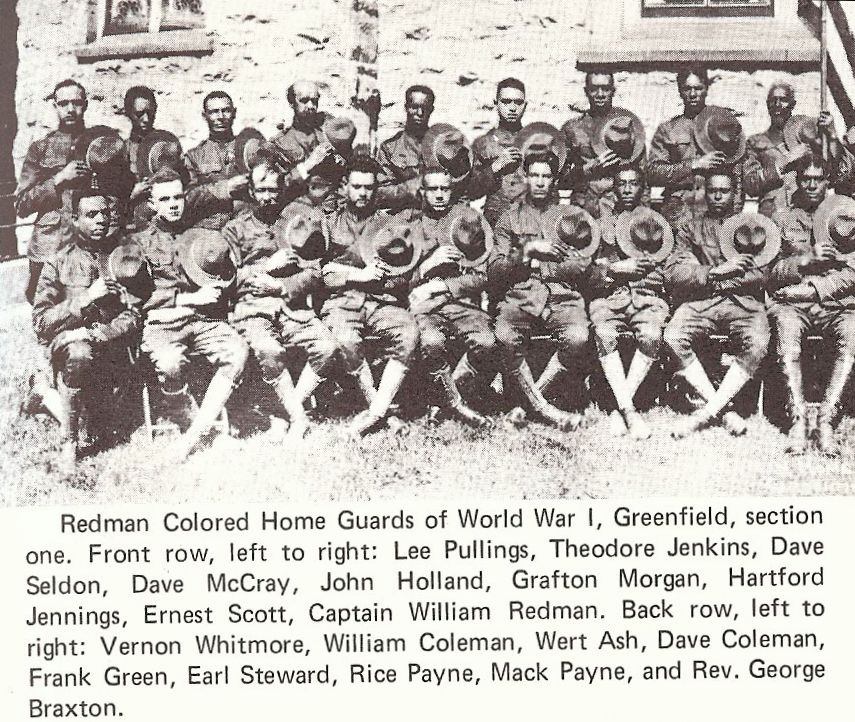
 George Braxton will be honored with a Bike Rack/Bench located at the Village Square. George Braxton will be honored with a Bike Rack/Bench located at the Village Square.Other historic figures from Greenfield honored with a Bike Rack/Bench include:  A Bike Rack/Bench honoring Johnny Paycheck will be located at a site uptown, location to be determined. A Bike Rack/Bench honoring Johnny Paycheck will be located at a site uptown, location to be determined. A Bike Rack/Bench honoring Drusilla Blackburn will be located at a site uptown, location to be determined. A Bike Rack/Bench honoring Drusilla Blackburn will be located at a site uptown, location to be determined.
Rev. Dr. Samuel CrothersSamuel Crothers was born in 1783, Chambersburgh, Pennsylvania and died in 1856, in Oswego, Illinois to Benjamin and Susannah Lockhart Crothers. At the age of five, his parents moved the family to Lexington, Kentucky. Samuel entered the Lexington Academy in 1798. He united with the Associate Reformed Presbyterian Church in 1803. He studied at the New York Theological Academy from 1805–1809 and was licensed to preach the Gospel on 9 November 1809. He then spent time as a missionary in Ohio, Indiana, Kentucky and Illinois. In the fall of 1810 Samuel accepted a call to pastor the congregations of Chillicothe and Hop Run Associate and Reformed Presbyterian churches in Ross County, Ohio. March 1813 he settled in Greenfield to be near the Hop Run church. He resigned his position in Greenfield on 10 April 1818 because of differences over church doctrine. He removed to Winchester, Kentucky where he lived for two years preaching and teaching in an academy. He united with the Presbyterian Church and was called to Greenfield where in 1820, the Presbyterian Church of Greenfield was organized with 60 members. Rev. Crothers is notable for having spent much of his lifetime writing and speaking against those who had made a biblical case for slavery, especially in his articles published in the Quarterly Anti-slavery Magazine. Crothers, a well-respected theologian and debater, debated the issue with theological giants of the era including Charles Hodge. Noteworthy among Crothers' work are fifteen letters published in the Cincinnati Journal, an "Appeal to Patriots and Christians, in Behalf of Enslaved Africans". In addition, Crothers published several books, including "The Gospel of the Jubilee" and "The Life of Abraham". In 1833, Rev. Crothers and the Greenfield Presbyterian Church hosted the first meeting of the Paint Valley Abolitionist Society, which was later reorganized in 1836 as the Greenfield Anti-Slavery Society. In 1835 he was one of the founding members of the Ohio Anti-Slavery Society, serving as an officer of that organization for several years. Rev. Crothers and members of his congregation operated the Greenfield station of the Underground Railroad, helping thousands of runaway slaves, including, it is said, "Eliza Jane Harris of Uncle Tom's Cabin fame". He served as pastor of the Greenfield First Presbyterian Church for forty-six years until his death while visiting his son in in Oswego, Illinois. He is buried in the Old Burying Ground. 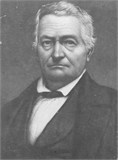
Frederick DouglassFrederick Douglass (born Frederick Augustus Washington Bailey, c. February 1818–February 20, 1895) was an African-American social reformer, orator, writer and statesman. After escaping from slavery, he became a leader of the abolitionist movement, gaining note for his dazzling oratory and incisive antislavery writing. He had escaped slavery to the sanctuary of Massachusetts where he defeated all efforts to return him to his Maryland master. Although not a resident of Greenfield, he visited Greenfield in 1844 at the beginning of his career and gave great impetus to the abolitionist movement. He visited and stayed a week with Dr. Milton Dunlap, one of the leading abolitionists. During his stay he delivered several impassioned addresses in local churches and made many converts to the cause of abolition. When he left, he was presented with a good riding horse and saddle. 
Rachel StaffordIt is believed that former slave Rachel Stafford was the first African American female living in Greenfield. She was listed in the 1850 census as a member of the Samuel Crothers household. F.R. Harris reported an old ledger of the Douglas tannery which recorded the purchase of a pair of shoes for "Rachel" in 1848 by Dr. Samuel Crothers, pastor of the Greenfield Presbyterian Church. It has been difficult to find much information about Rachel although emancipation records and a couple pages written in "All in the Same Spaceship", (Wayne L. Snider) about Rachel have been found. Her last name was not used by people who knew her, but the United States Census of 1850 listed her age reported as seventy years and her birthplace as the State of Maryland. There is also a record in the Highland County Recorder's Office of the emancipation of a Negro slave named Rachel and a record was made in Bourbon County, Kentucky, in 1800, by Samuel Gibson, indicating his purpose to emancipate the eighteen year old Rachel when she became twenty–five years of age in 1807. Her gravesite is in the Old Burying Ground in Greenfield.  
Here is another summary of Rachel. Did You Know?Ohio and Highland County were important in the Undergournd Railroad system. The area was geographically located between Ripley and the Ohio River and Sandusky, Ohio, to the north. It has been said that Harriet Beecher Stowe gathered information for her Uncle Tom's Cabin story while staing at the Rankin house in Ripley. The story is of Eliza and George Harris being helped by the UGRR through Ohio to Sandusky and eventually to Canada. Historians tell that is was Greenfield where Eliza stayed until George arrived to join her and continue their journey. 
Also in the above book, it is said that the first Negro person to live in Greenfield was one named Rachel. This information was taken from F.R. Harris' A Greene Countrie Towne. Although information is scarce about Rachel, she was an emancipated slave, done so by court order per her "owner" Samuel Gibson. It is believed that she took the last name of Stafford while living with a William Stafford family in the Fall Creek area. She later became a housekeeper in the Dr. Samuel Crothers home and appears in the 1850 Census records as a member of the Crothers household. Our Old Burying Ground records lists a Rachel Stafford d. May21, 1858, a. about 80yrs. Her gravestone was found, repaired and cleaned. SportsDon GrateThe Longest Throwby Steven P. Gietschier Don Grate proved in Greenfield, Ohio, that he could kick a football. He proved in Columbus that he could shoot a basketball. And he proved in Chattanooga, Tennessee, that he could throw a baseball - farther than anyone else. And then he proved it again and again. In the 1950s, when ballplayers were more scornful of the threat of injury than they are today and when minor-league games were often enlivened by such field events as cow–milking contests and egg–-tossing relays, Grate, a major-league pitcher turned minor-league outfielder; three times set the record for throwing a baseball for distance. He didn't own the record for long, it is true, but, to hear Grate tell it, the mark should still be his. His best throw, he says, went farther than could be measured, certainly farther than the throw since recognized as the world's longest. Don Grate may not have set out to establish the record he did, but even at Greenfield's Edward Lee McClain High School, he was an outstanding athlete. He earned four varsity letters in both basketball and football and another three in baseball. He won All–Ohio honors in basketball and could have attended the University of Kentucky to play for Adolph Rupp. But Grate decided to attend Ohio State. He wanted an OSU degree to get a teaching and coaching job in Ohio, and he wanted to play for the Buckeyes freshman basketball coach, former All–American Jimmy Hull, himself a Greenfield native. He dropped football once he reached Columbus in the autumn of 1942, but he joined Hull's basketball team and co–captained it to an undefeated season. In the spring, he played center field and shortstop for the varsity baseball team and pitched as well. "I pitched a no–hitter for four or five innings my first time out against Michigan State," he told a reporter in 1989, "then the coach took me out; wouldn't let me finish." Later that season he completed a no–hitter against Purdue. As a sophomore and junior, Grate captained the Buckeye basketball team and was named All–Big Ten and All–American. He was selected for the United States team for the 1944 Olympics, games that were never held because of the war. Slowly, he began to consider a future in baseball. He won the Potter's Runmaker Cup, awarded to Ohio State's best offensive baseball player, as a freshman and as a sophomore and tied in the voting as a junior. After the 1945 collegiate season, he gave up his remaining eligibility to sign a contract with the Philadelphia Phillies. Phillies general manager Herb Pennock had his scouts scouring college campuses for talent – the scout who signed Grate also landed Robin Roberts out of Michigan State – and Pennock clocked Grate's fastball at ninety–eight miles per hour and decided to make him a pitcher, sending him to Utica in the Eastern League. Grate went 7–5 with a 2.23 earned run average and got a short trial with the Phillies at the tail end of the season. Returning to Utica in 1946, he won fourteen games and again got called up to the big club. Entering a late–season game without properly warming up, he delivered a sidearm pitch and heard something pop. Over the following seasons, Grate battled a sore arm and continued to pitch for several teams, but his strikeout totals dwindled. He was used mostly in relief and as a pinch hitter. In 1951, playing for the Chattanooga Lookouts in the Southern Association, he came off the bench for an injured outfielder and started a game. "Then I got lucky,:quot; he told the Sporting News a year later. "The first two times up I hit in the hole and legged them out for inside-the-park home runs, and they never took me out of the outfield." In 1952 the Lookouts, on the road at New Orleans, were invited to participate in a typical minor league attendance booster, an array of pregame field events at the ballpark. Grate at first rejected manager Cal Ermer's suggestion that he enter the long–distance throwing contest, but then he changed his mind. "So, I threw...from centerfield in the old Pelican ballpark, and the darn ball went over the press box; they couldn't measure it." Back in Chattanooga, Lookouts owner Joe Engel, one of the minor leagues greatest showmen, offered Grate "a famous prize" if he could break what was then the world record for the longest thrown ball by a professional ballplayer, 426 feet, 9 1/2 inches, set in 1910 by Sheldon Lejeune of Evansville in the Central League. On September 7, 1952, the last day of the season, Grate threw a dozen balls from centerfield toward the plate. The best throw landed high in the stands and was measured at 434 feet, 1 inch. National Association President George Trautman, head of the governing body for all the minor leagues and a former Buckeye basketball coach himself, certified this throw on October 4. Grate earned his fabulous prize: $200. Not all that bad, considering his monthly salary was $500. A year later, under similar circumstances – a field day preceding a doubleheader between Chattanooga and Little Rock – Grate tried again. He made five throws, the last of which soared 443 feet, 3 1/2 inches, for a new record. That ball now resides at the National Baseball Hall of Fame. But with this fame came a certain responsibility, specifically, the task of getting the Lookouts out of jail. One day Ermer took his team to the Atlanta federal prison for an exhibition game. Grate pitched and won, but then prison authorities told the Lookouts they were not free to go. Inmates who had heard of Grate had been wagering whether he could throw a ball from the playing field and break a window high on the prison wall. The Lookouts, it was made clear, could not leave until Grate gave it a fling. "So I threw one." Grate recalled, "and it hit one of the dividing bars that separates the window panes. The guard said, 'You're going to have to throw another one.' I threw that on top of the prison, and they let us all go home." Grate did worry about injuring himself. "I had already hurt my arm once," he said, "and didn't want to do it again. I limited my throwing for records to the end of the season when I was sure my arm was in shape." So, three years after his second record throw, while playing for Minneapolis in the American Association, Grate tried again on Fan Appreciation Night, August 27. One of his five attempts landed inside the golf bag of trick–shot artist Chuck Lewis, also on the evening's program, and was measured at 445 feet, 1 inch. Grate retired from baseball after the 1957 season, but, unlike too many players, he had prepared well for life beyond baseball. After signing with the Phillies, he had returned to Ohio State every winter until he earned his education degree in 1949. He played a little pro basketball and coached high school basketball in Kilbourne and in Westerville, Ohio, and was quite prepared by 1950 to become a full–time teacher and coach. But Fred Taylor, later to be a Buckeye legend and then a member of the Lookouts and Grate's friend from recreational and industrial basketball, persuaded the Chattanooga management to give Grate a shot. Still, by 1957 grate sensed that he would not make it back to the major leagues. Minneapolis was a farm team of the New York Giants, and they had Willie Mays in centerfield. When the Giants promoted the likes of Felipe Alou and Orlando Cepeda to the parent club in 1958 and offered Grate a contract with Phoenix, he knew it was time to move on. Grate had kept coaching and teaching, first in Ohio and then in Chattanooga, and in 1963 he moved to Miami, Florida. He earned a master's degree and taught high school until 1988. Active in community affairs, he and his wife still live in Miami and raise greyhounds. And last September 21, at the Ohio State–Pitt football game, he was inducted into the Ohio State University Athletic Hall of Fame. One more thing. Grate's record for the longest baseball throw was officially broken on August 1, 1957, by Glen Gorbous, a Canadian then playing for Omaha of the American Association. His fling was measured at 445 feet, 10 inches – nine inches beyond Grate's mark. But Grate insists that his best Minneapolis effort went farther. "That thing hit eight or ten feet up on the backstop," he said. "They only measured it to the bottom of the backstop and that was 445 feet plus. You should probably add another 10 or 15 feet to it". 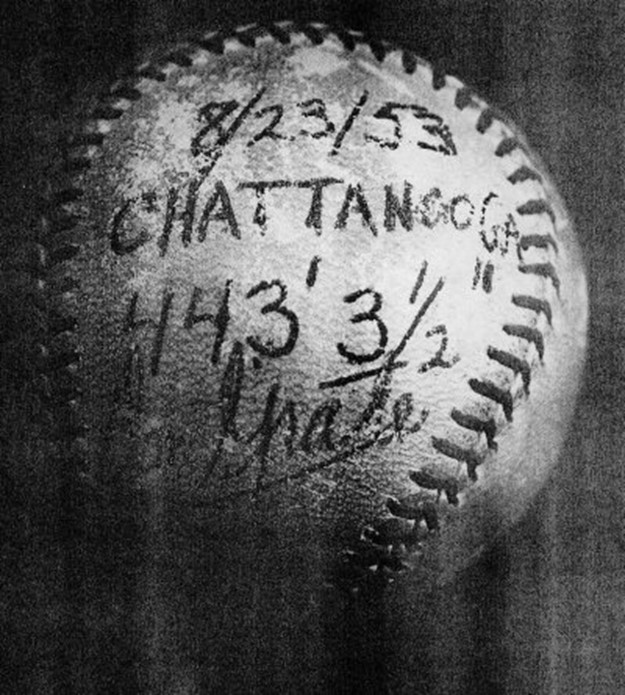
Dr. James "Jimmy" HullJames "Jimmy" Hull, born in 1917, was a 1935 McClain graduate who played basketball at The Ohio State University. Hull was a two-year starter for the Buckeyes. As a senior and captain of the 1938–1939 team he was the leading scorer in the Big Ten Conference and was a consensus All-America selection. As a forward he led the Ohio State Buckeyes to the championship game in the first-ever NCAA Basketball Tournament. The Buckeyes finished the season with a 16–7 record, and lost to the Oregon Ducks in the finals. Hull was named the Most Outstanding Player of that first tournament. In 1977 Hull was inducted as a charter member of the Ohio State Varsity O Hall of Fame. Later, Jimmy Hull had an atrium in the Alumni House on Ohio State's campus named after him, The Jimmy Hull Atrium. Jimmy Hull died on November 2, 1991. He was also inducted into the Rocky Mountain Orthodontics Dentist Athletic Hall of Fame. 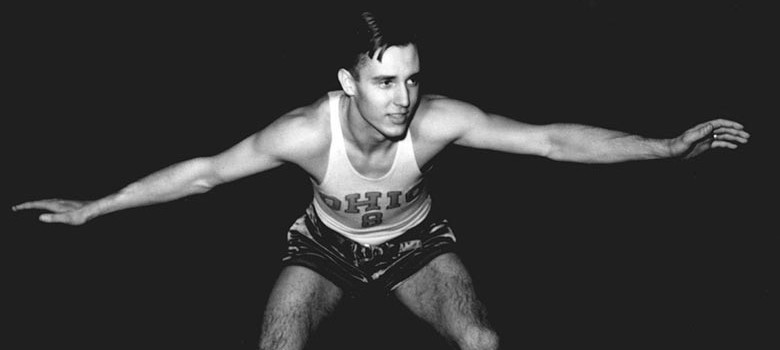

Women's SuffrageWenona MarlinWill o' the Wisp, New York and Paris SketchesClass of 1888, Greenfield High School. Journalist, lecturer and author. One of the leaders of the equal suffrage movement in New York. Born in Greenfield, Ohio, November 15, 1871, a graduate of Greenfield High School 1888, was first a stenographer for Procter and Gamble in Cincinnati. By 1905 she was in New York City taking a lead in the Women's Suffrage Movement. The fact that many men today regard the vote with such little respect is partly due to the fact they never did anything to earn it. In 1917 she picketed the White House as a Silent Sentinel protesting President Wilson's lack of support for women's suffrage. Journalist, lecturer, an employee of Harper Brothers Publishing Company, and traveled extensively throughout Europe and South America as a journalist. She traveled to the Panama Canal to report on its construction in 1913 then told the story of her efforts to prove her American citizenship as a single woman upon returning to the United States. Author of "New York and Paris Sketches", "Will o' the Wisp". She continued active in the National Women's Party. She died September 8, 1945, in New York City and is buried in Greenfield Cemetery. She demonstrated her interest in Greenfield by leaving several thousand dollars to Greenfield Municipal Hospital and the First Baptist Church. 

Women's TemperanceDrusilla BlackburnDrusilla (Gossard) Blackburn played an important role in the Women's Crusade in Greenfield. She married John S. Blackburn, a farmer and later a cattle buyer. Together they had six children. East Main Street (now Jefferson Street) from the Public Square to Second Street had over time become the home to many saloons and 'disreputable dives'. Young William, their eldest, was killed by a stray bullet on September 3, 1864, as he was walking past the saloon of Newbeck and Hirn. No arrests were made, and it became increasingly evident that no one would be apprehended. That prompted many citizens, especially women to take direct action against the saloon keepers. On July 10, 1865, two women were pushed off the sidewalk by a drunk as they passed by one of the saloons. The ladies gathered with others and a "council of war" was begun. They approached the mayor with their concerns, but he apparently did not take them seriously. The ladies marched up Main Street stopping at various saloons in protest of the liquor sales. Drusilla, a member of the protest group, shouted out "Here is the place my boy was murdered!" Drusilla smashed a window in Newbeck and Hirn's and entered with her two daughters, followed by others. Hatchets, axes, and hammers appeared, and barrels of whiskey and beer were rolled to the sidewalk where their contents soon were flowing down the hill to Paint Creek. Newbeck and Hirn's was out of business! The women did the same for Linn's Drug Store as the mayor watched on as well as the proprietor Linn. The raids continued to other establishments. In total it was estimated that the ladies dumped 2500-3000 gallons into the streets. It didn't end there for the women as criminal action against them was filed, the affidavit signed by William S. Linn. No indictment was returned for any of the "raiders". Drusilla's husband, John Blackburn, was convicted of murdering Mary Ann Lovell along Cliff Run near Rapid Forge Road in 1871. After appealing to the Ohio Supreme Court, the case was scheduled for retrial. In the meantime, Blackburn was declared incompetent by insanity and was confined to an asylum at Athens, Ohio. Drusilla's son, Thomas, was a foreman in The American Pad & Textile factory when his daughter, Helen, was born in 1910. Helen was a graduate of McClain High School, studied chemistry at Ohio University and eventually lived with her husband, Adrian Hoover, in the wilds of Minnesota near the Canadian border. There she wrote several popular books about their life in the wilderness. The Women's Raid marks a milestone in the history of the temperance movement. It added a militant note which had been lacking in the past, a religious fervor which is the distinguishing characteristic of all great movements whether they succeed or fail. The crusading spirit of the women of Greenfield was the well-spring from which came the Praying Crusade which was launched in neighboring Hillsboro eight years later from which came the Women's Christian Temperance Union and, still later, the Anti-Saloon League and National Prohibition. The trial of the ladies of Greenfield who had wielded the hatchet and the axe so effectively, fully reported in the papers of the day, dramatized as nothing else could have done the evils of the liquor traffic. The militancy of their methods were not adopted but the militancy of their spirit undoubtedly exerted a tremendous influence on the whole future course of the battle against the saloon.  A Bike Rack/Bench honoring Drusilla Blackburn will be located at a site uptown, location to be determined. A Bike Rack/Bench honoring Drusilla Blackburn will be located at a site uptown, location to be determined.Other historic figures from Greenfield honored with a Bike Rack/Bench include:  A Bike Rack/Bench honoring George Braxton will be honored with a Bike Rack/Bench located at the Village Square. A Bike Rack/Bench honoring George Braxton will be honored with a Bike Rack/Bench located at the Village Square. A Bike Rack/Bench honoring Johnny Paycheck will be located at a site uptown, location to be determined. A Bike Rack/Bench honoring Johnny Paycheck will be located at a site uptown, location to be determined. |
||||||||||||||
 |

|